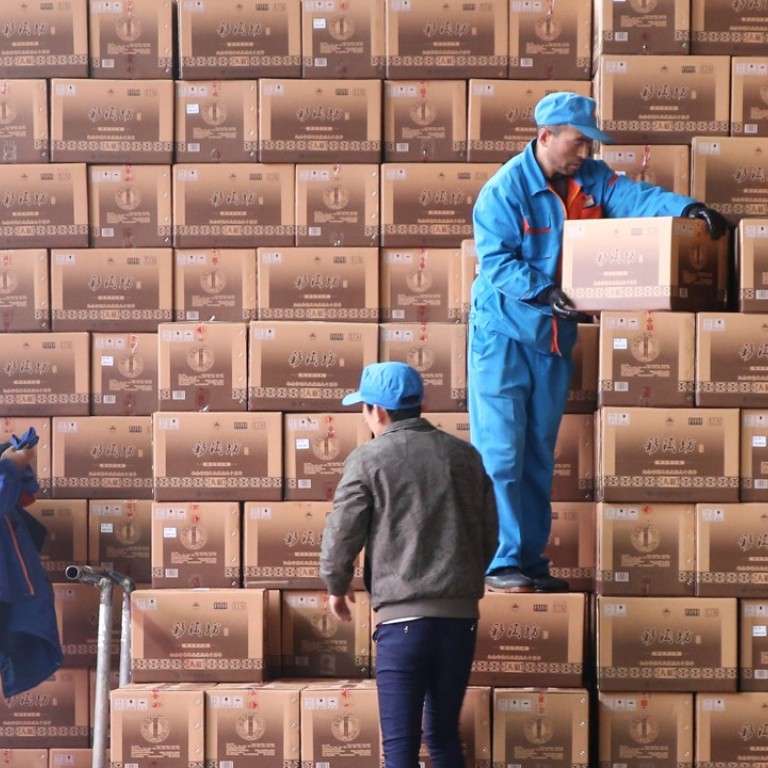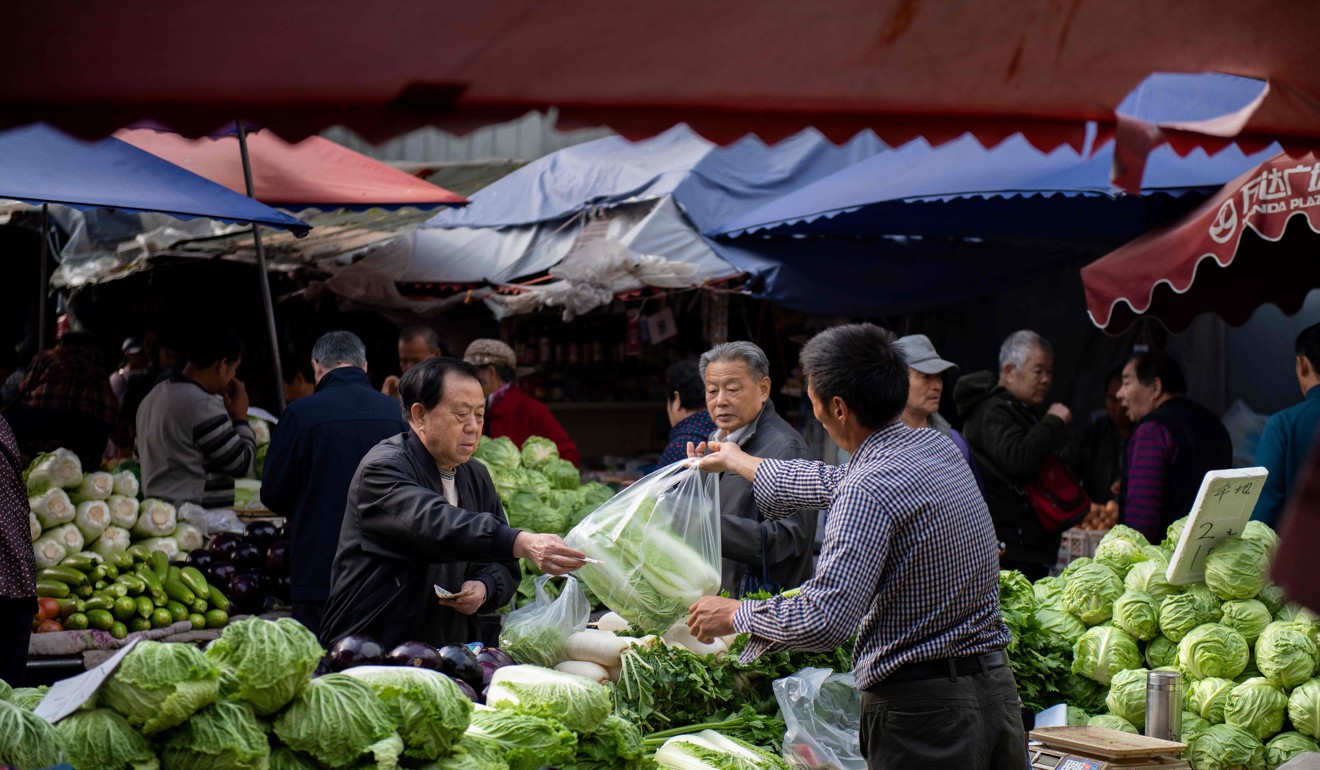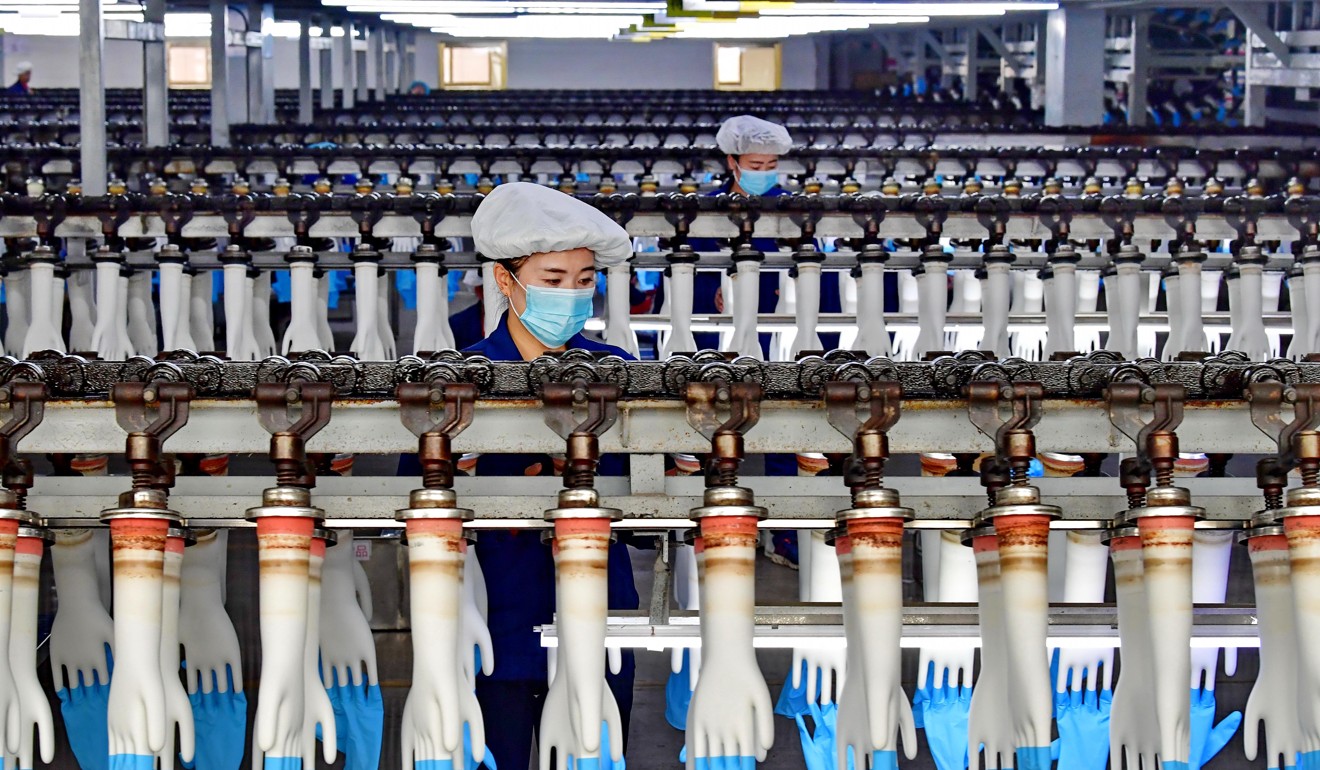
China inflation tame, frees central bank to further ease trade war impact on economy
- China factory inflation eases in October, consumer inflation tame, as economy slows due to trade war
- Modest inflation allows People’s Bank of China to ease monetary policy further to offset trade war impact on economy
Price increases of goods sold by China’s factories slowed for the fourth straight month in October as the world’s second largest economy faces lower demand for industrial materials amid cooling manufacturing activity exacerbated by a trade war with the US.
The producer price index (PPI), a measure of the rate of change in prices of goods sold by producers at the wholesale level, rose 3.3 per cent in October from a year ago, easing from 3.6 per cent in September, according to data published by the National Bureau of Statistics on Friday.
The slower growth rate matches the median expectation of analysts polled by Bloomberg. On a monthly basis, the PPI rose 0.4 per cent.
Nomura said today it expected the downward trend in PPI inflation “to continue in a milder manner through winter, given a less severe anti-pollution campaign this year compared to last”.
China’s exports higher than expected as shippers rush to beat next round of trade war
The growth rate of prices paid by consumers was unchanged in October.
The consumer price index (CPI) rose 2.5 per cent, the same rate as in October and matched the median expectation in Bloomerg’s poll. On a monthly basis, the CPI rose 0.2 per cent.
October’s growth rate remained well below the China’s government’s 3 per cent target rate for this year.

Analysts believe inflationary pressures will remain mild in the period ahead as China’s economy is growing at its slowest rate in a decade.
“In the medium term, due to weak domestic demand and uncertainties in external demand, overall inflationary pressures are likely to remain at relatively moderate levels,” according to a research note published by brokerage firm CICC.
With China’s export economy cooling, analysts expect the trade standoff with the US is likely to hit manufacturing numbers hard at the start of next year.
So far, there’s been little impact on China’s overall exports data as US importers and Chinese manufacturers have rushed to “front load” the filling of orders for early next year to avoid the higher US tariffs expected to take effect on January 1.

But there are signs that policymakers are increasingly nervous about the outlook, given the escalating trade war with the US. The yuan has weakened 11.4 per cent between April and the end of October.
Last month, the Communist Party’s Politburo, the 25-member supreme policymaking body headed by President Xi Jinping, admitted there was “growing downward pressure” on the economy with “profound changes” in the external environment.
In response, the government launched a series of measures to support the economy, including cutting individual taxes, speeding up infrastructure spending and extending additional financing options to help struggling smaller companies.
China’s financial bailout promotes the survival of the fittest, leaving weak borrowers to fend for themselves
But with price pressures remaining modest, inflation concerns will not hold back the People’s Bank of China from easing monetary policy to support the economy, according to analysts.
Companies, particularly those in the private sector, are facing major financing difficulties, with corporate bond defaults hitting a record high this year.
The central bank has cut the reserve requirement ratio (RRR) – the amount of money banks must keep at the central bank – four times this year, freeing up more cash for banks to lend to help ease corporate credit concerns.
China service sector growth slows to 13-month low
Alicia Garcia-Herrero, chief economist for Asia Pacific at Natixis, expects the PBOC will continue to steadily pump money into the lending market.
“China will continue to use monetary conditions to support growth beyond the 250 basis point RRR cuts this year and additional targeted lending,” she said.
What’s more, as a result of poor GDP data and weaker-than-expected purchasing managers’ index (PMI) figures for October, China is likely to introduce additional fiscal stimulus to boost growth, Herrero predicted.
Gross domestic product increased by a slower-than-expected 6.5 per cent in the third quarter from a year earlier, down from 6.7 per cent in the second quarter.
The PMI, which gives a snapshot of operating conditions in the manufacturing sector, dipped to 50.2 in October – just above the dividing line of 50 between expansion and contraction. Moreover, the PMI sub-index, which measures new export orders, dropped for the third consecutive month to 46.9 in October, the lowest reading since January 2016.

